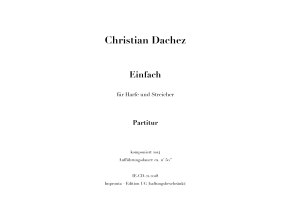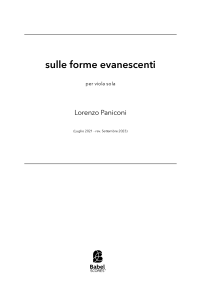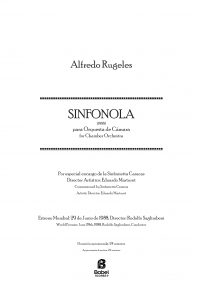Estar y Ser
ISMN : 979-0-2325-4365-9
- Login to create your own lists
This work is based on a concept expressed by Rodolfo Kusch - Argentinean philosopher- the antagonism between Ser - Being- the man who seeks that which is typical of man and therefore, common to all men and Estar -Staying- the man who is overcome by the immensity of soil and ends up adapting to it. At present the Argentinean and Latin American man lives this reality as the opposition between that which is foreign and that which is own.
In terms of music, this piece is organized into a first part, a bridge towards the second part, the second part and coda. The first part represented by Estar uses: a Bolivian conception of Agglomerate - overlapping of notes making up sound block- played as an arpeggio, with an aggressive sound - simultaneous pizzicato Arco- and first position - the first position coincides with a selection of notes taken from the D minor scale and the D Phrygian scale- an internal structure of contrast provided by notes played with piano dynamic and the bow. The second part, which contrasts with the first one, follows the Western idea of homophonic texture. The sound becomes warm, uses the open D-string, the arpeggios of the first part now expand; the notes from D minor scale and the D Phrygian scale are used horizontally with zones in Eb minor where the dynamic increases - an as internal structure of contrast-. It represents Ser. Finally, the Coda begins with the need to vary the initial arpeggio; now it is smooth and on the steel strings. Then it mixes with elements from the second part.
Estar y Ser was commissioned by Forum Neue Musik Luzern, was performed by John Antony Calabrese and was awarded by “Tribuna Nacional de Compositores- Argentina - Premio TRINAC 2005”.
Pages - 10







